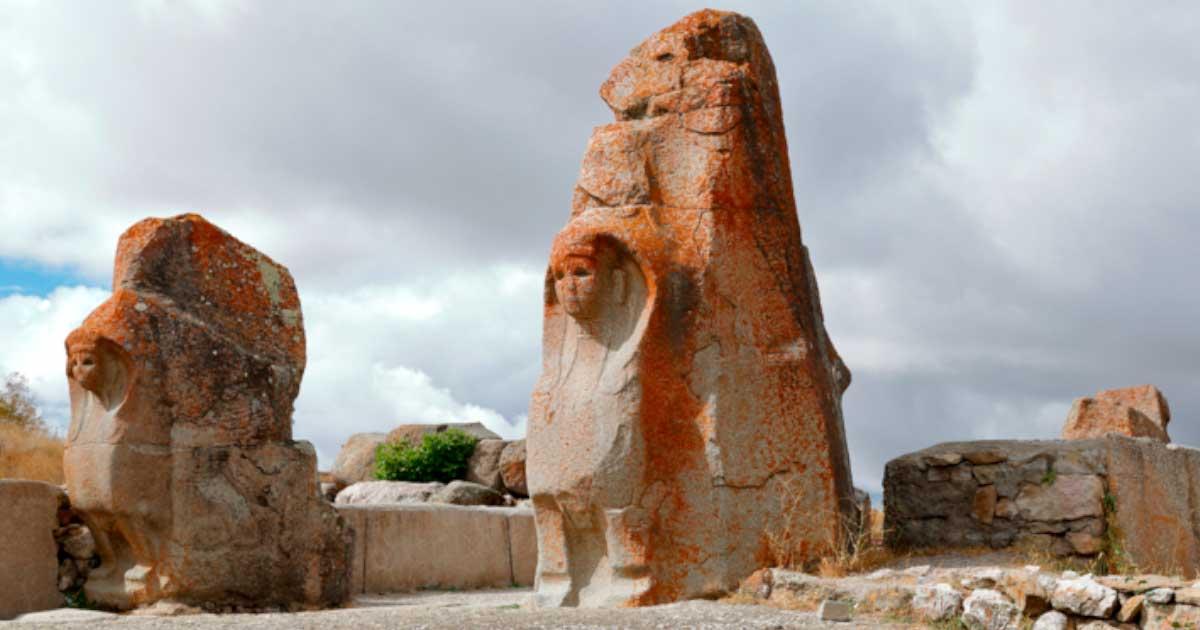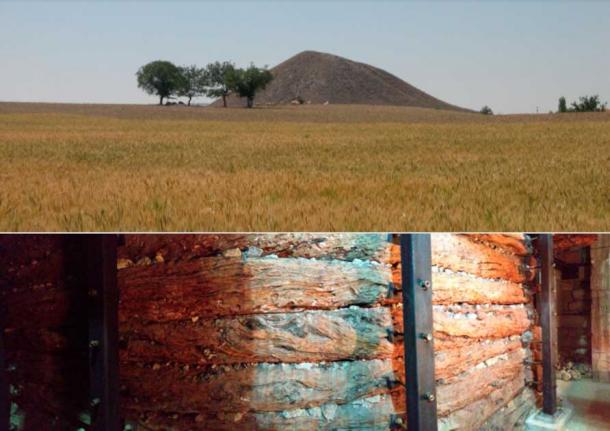
The Role of Severe Drought in the Collapse of the Hittite Empire
A study of juniper tree-ring samples from central Turkey, along with other dating methods, shows that a climate crisis in the form of a severe drought in 1198–1196 BC, played a major role in the downfall of the Hittite Empire. The event, known as the Bronze Age Collapse, saw the near-simultaneous demise or decline of several important empires in the Middle East and eastern Mediterranean region, including the Hittite Empire (c.1650 BC-1190 BC), which was one of the ancient world’s great powers across five centuries.
“There was likely near-complete crop failure for three consecutive years. The people most likely had food stores that would get them through a single year of drought. But when hit with three consecutive years, there was no food to sustain them,” University of Georgia anthropology professor and study co-author Brita Lorentzen said.
She further added that this would have caused a domino effect, leading to a collapse of the tax base, mass desertion from the military, and a mass migration of people moving to better living conditions. Since the kingdom did not have control over ports and shipping, it was difficult to move food and other items into the area, as per the study published in Nature.

View towards Bogazkoy Hattuha. (Benjamin Anderson/Nature)
The Perfect Storm Scenario: A Domino Effect
The reason behind the destruction in the Middle East region at the conclusion of the Bronze Age has been a matter of intense academic discussion. Potential sources include advancements in metalworking and military tactics, massive population movements, incursions by the Sea Peoples, conflict between states, environmental shifts, food shortages, and outbreaks of disease.
Some experts have begun to consider the possibility of a "perfect storm" scenario, where all of these factors converged to bring about a catastrophic event.
Archaeologist Sturt W. Manning, lead author from the Cornell Tree-Ring Laboratory, and his team members, who were also from the University of Georgia, have made a significant impact on the understanding of a major climate event, through their ground-breaking research. They not only confirmed its existence but also determined its precise dates, which was previously not possible.
The researchers examined long-lived juniper trees that grew in the region at the time and eventually were used to build a wooden structure south-west of Ankara around 748 BC. These trees offered a regional paleoclimatic record through their patterns of annual tree-ring growth and the ratio of two forms, or isotopes, of carbon in the rings.
- Unique inscriptions in Chinese cave reveals record of ancient droughts
- Sahara Climate Change Linked to 1000-Year Southeast Asian Megadrought
Sudden Event or Gradual Shift?
By analyzing the timbers of juniper trees from the historic Gordion site, the authors studied two indicators related to water. Firstly, narrower tree rings indicate drier years as trees typically grow less with less water. Secondly, by using carbon-13 stable-isotope analysis, the team was able to identify drier periods through elevated levels of δ13C, a measure of the relative proportion of 13C to 12C isotopes in the samples.

Left; Wood sample GOR77, recovered from the site of Gordion in central Anatolia GOR-77, showing sampling area scan. Right; Wood sample GOR77 focus on sample area, and showing the section related to 1198-96 BC. (Left: Cornell Tree Ring Laboratory, Right: Brita Lorentzen/ Nature)
The findings revealed a gradual shift to drier conditions from the 13th century BC to the 12th century BC, and more importantly, three consecutive years of severe drought in 1198, 1197, and 1196 BC, which coincided with the known timing of the empire's dissolution.
This severe drought likely caused near-complete crop failure for three years in a row, leading to food shortages, a collapse of the tax base, mass desertion of the large Hittite military, and a mass movement of people seeking survival, in line with the ‘perfect storm’ scenario, reports The Guardian.

Midas Mound Gordio, and the wooden structure within it from where the samples were taken. (John Marston/Nature)
The Hittite Empire: Rise and Fall
The Hittite empire, centered in modern-day Turkey and spanning parts of Syria and Iraq, was one of the ancient world’s great powers, and its capital, Hattusa, was enclosed by a monumental stone wall with gates adorned with lions and sphinxes. However, the empire eventually fell, with Hattusa burned and abandoned, and the texts written on clay tablets using the cuneiform script common in the region – detailing Hittite society, politics, religion, economics, and foreign affairs – went silent.
The study's findings offer important lessons about the lessons we can learn from history and the impact of climate change on human societies. The researchers warn that the climate changes that are likely to occur in the next century will be much more severe than those experienced by the Hittites, and raise important questions about our own resilience and ability to withstand these changes.
One of the persistent mysteries in Hittite research has been the sudden and deliberate abandonment of the city of Hattusa during the final years of the Hittite empire. Evidence suggests that this was a carefully planned event, as all official buildings had been emptied of their valuable possessions, leading to speculation that the royal family had relocated to another city.
Despite the lack of concrete evidence of the city being sacked through warfare or conquest, there are various theories surrounding the reasons for Hattusa's abandonment. Changes in climate, including droughts and famines resulting from shifting weather patterns, are considered to be among the potential factors that contributed to the city's downfall.
The case of the Hittite Empire highlights the vulnerability of extended political and economic systems in the face of extreme climate events. The collapse of such systems often leads to the unsustainability of large urban centers, raising questions about their long-term viability. The decline of cities provides communities with the opportunity to reorganize into smaller units, and to adopt a more sustainable way of life by drawing from a greater diversity of resources that are available in smaller quantities and coexisting with their local environment.
Top image: Hattusa, the capital of the Hittite Empire before its collapse. Source: Suat/Adobe Stock
By Sahir Pandey
References
Manning, S.W., et al. 2023. Severe multi-year drought coincident with Hittite collapse around 1198–1196 BC. Nature. Available at: https://doi.org/10.1038/s41586-022-05693-y.
Metcalfe, T. 2023. 3,200-year-old trees reveal the collapse of an ancient empire. Available at: https://www.nationalgeographic.com/magazine/article/late-bronze-age-hittite-collapse-archaeology-dendrochronology.
Reuters. 2023. Drought may have doomed ancient Hittite empire, tree study reveals. Available at: https://www.theguardian.com/world/2023/feb/08/ancient-hittite-empire-tree-study-drought.
















Comments
"The researchers warn that the climate changes that are likely to occur in the next century will be much more severe..."
That's the next funding sorted then and all is well in the world of research...
If the flying pigs are always blocking out the sunlight, will the Earth truly heat?
Drought is just one of many natural ‘darwinian; solutions for bad planning AND too many people, living (and slaving) TOO CLOSE together, ...if the two are not always one. Question becomes, where will we see it next, ...where of course they’ll be asking for money and not really solving the problem?
Nobody gets paid to tell the truth.